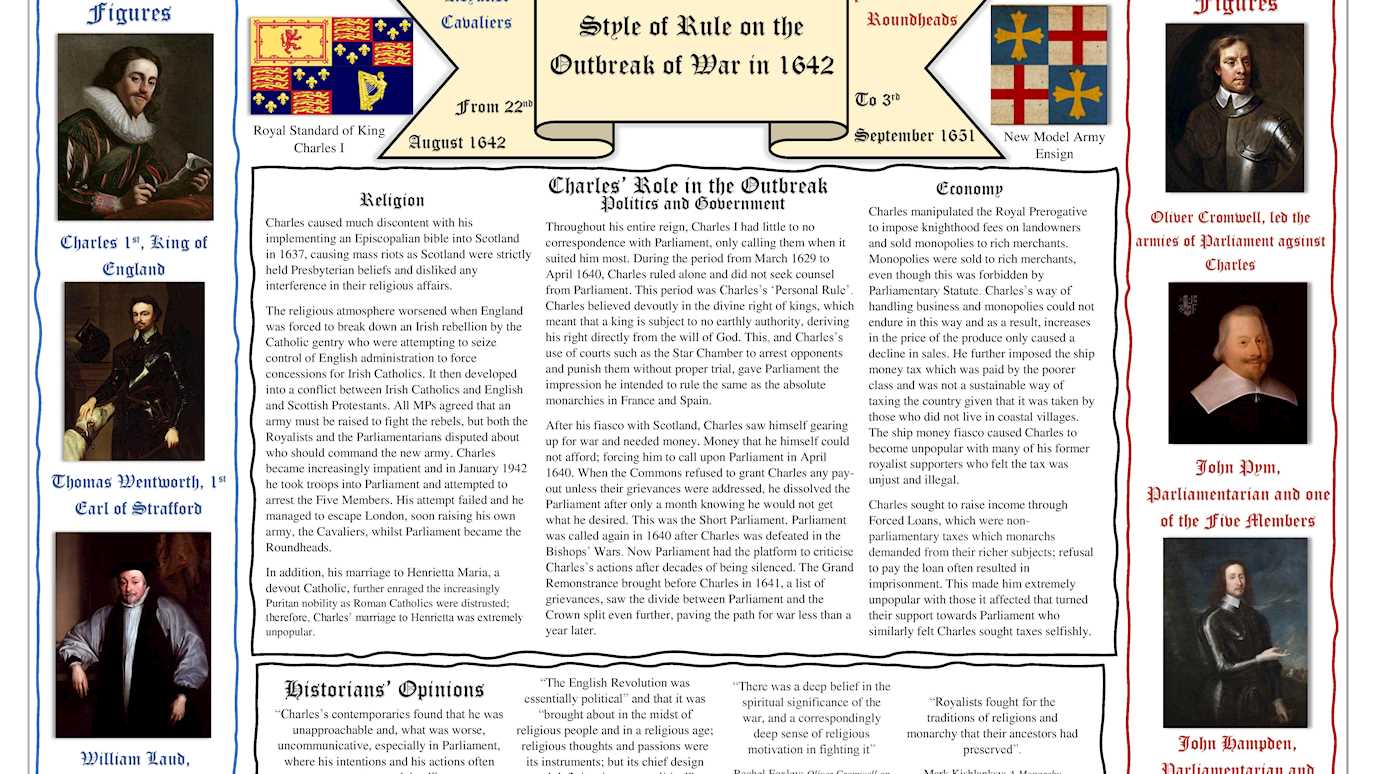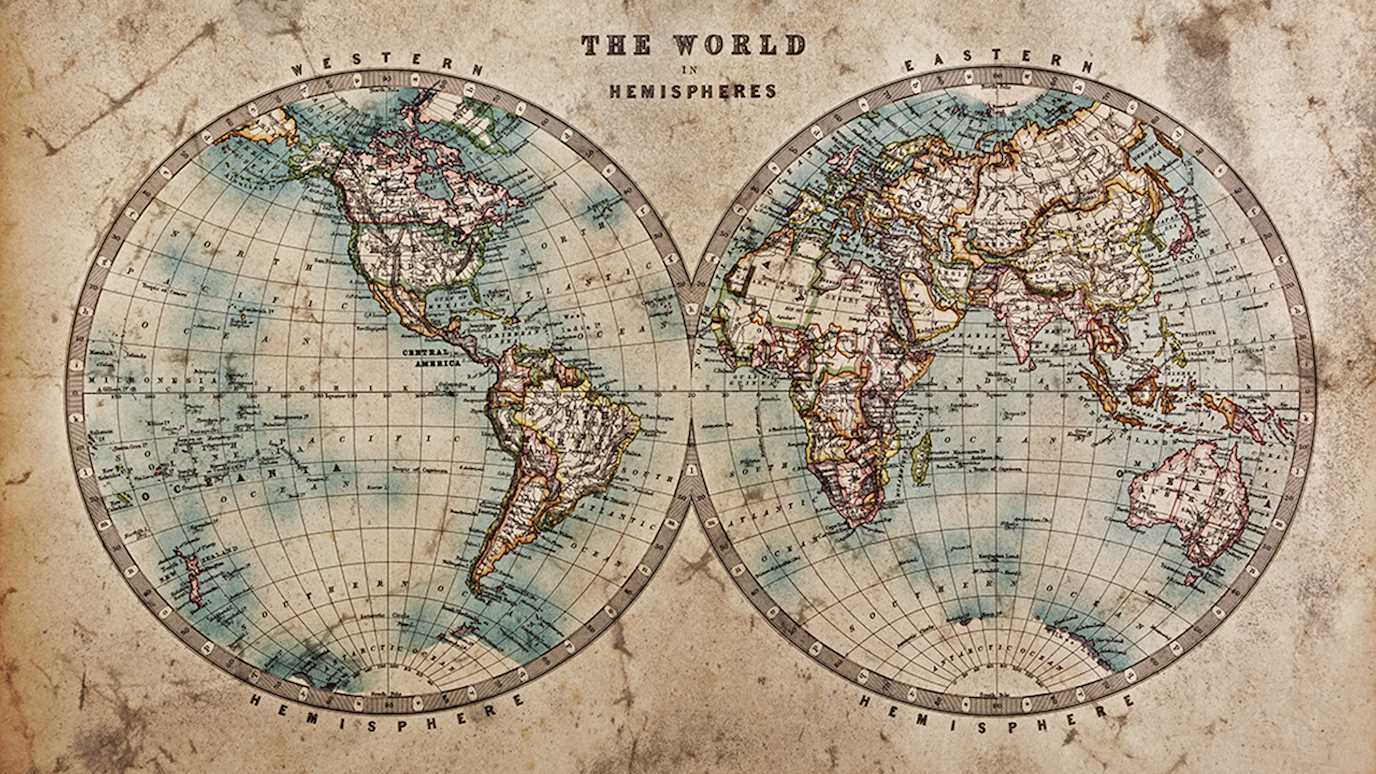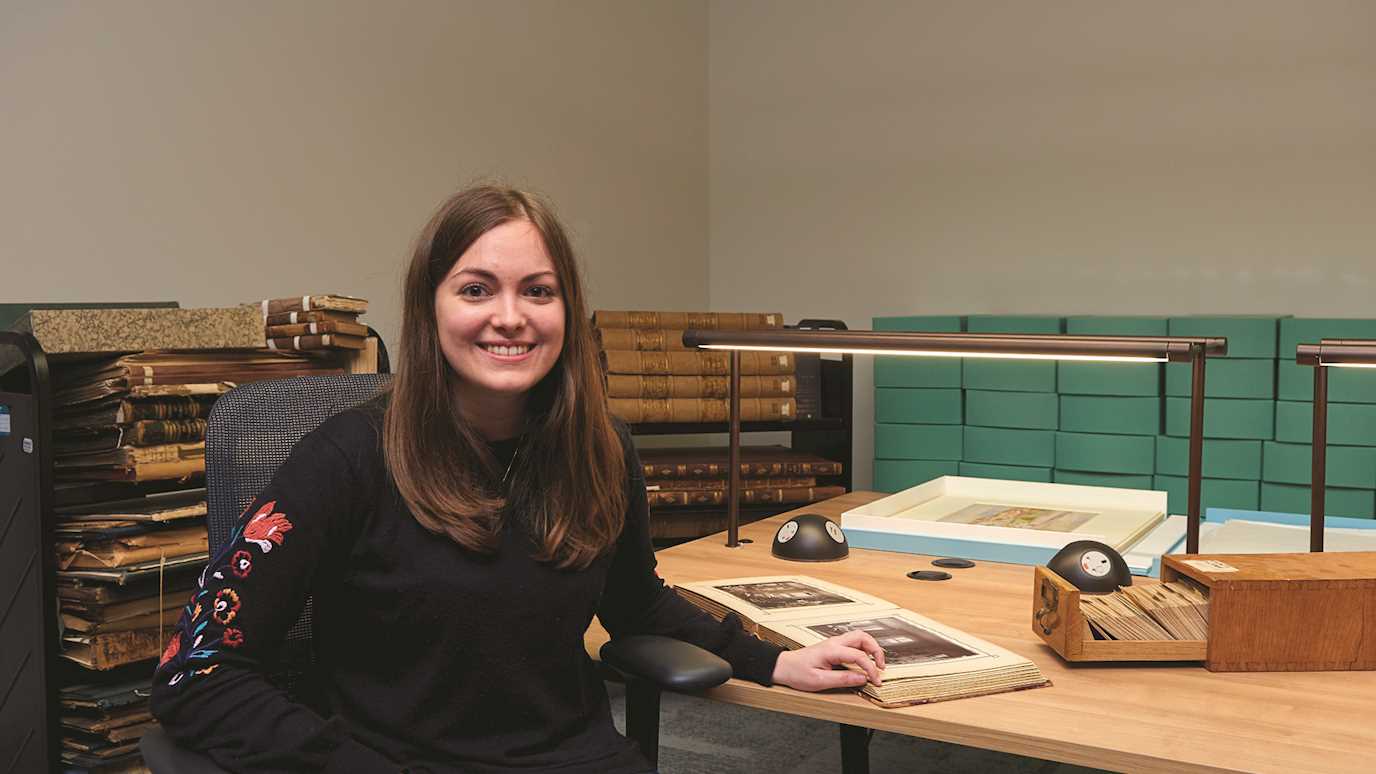The Effect of Charles I’s Style of Rule on the Outbreak of War in 1642
The main Idea I wanted to portray within the poster was how Charles’ actions alone, amongst a variety of facets, caused such a divide amongst his own people and Parliament, that it caused a Civil War. Not only did his actions then cause the Civil War and then the English Republic, but also his own execution in 1649 as well as the death of many others who fought alongside him during the war. The main form this approach took was the splitting of sides and the two colours representing the Royalist and Parliamentary sides. Furthermore, I added the flags of both sides to represent the immense differences between the two sides; the Cavalier flag being Charles’ Royalist banner, the Royal Standard, that is rather decadent, decorated with a harp, the English lion and several fleur-de-lis logos to represent his nobility and royal power. Whereas, the Roundhead flag, the New Model Army ensign, appears much simpler, incorporating the English flag. In addition, I added three important members of either side who play a large part in the leadup to the war, as well as to provide clarity as to the positions of those involved. Charles and Cromwell the two most notable of the Civil War, but William Laud, Archbishop of Canterbury, and John Pym, an MP, both had a significant part to play in causing the war. William Laud aided Charles in introducing the Episcopalian flag into Scotland and John Pym had been huge opposition to the Crown, not only during Charles’s reign, but Charles’ father James I.
The main body of the poster includes key information across three factors: politics and government, religion, and economy. Each column contains a brief summary of Charles’ affairs that helped to precipitate the war, for example his conflict with Scotland over the high Anglican bible, his dissolving of the long and short Parliaments, and his unjust raising of taxes through ship money. At the very bottom of the poster, I’ve added several historians opinions, not only just about Charles, but about the fundamental drives for the war, such as religion or the economy, to truly show the extent of Charles’ participation in the outbreak of Civil War in 1642.

























